Orfordness Lighthouse: Waving goodbye to a coastal landmark
- Published
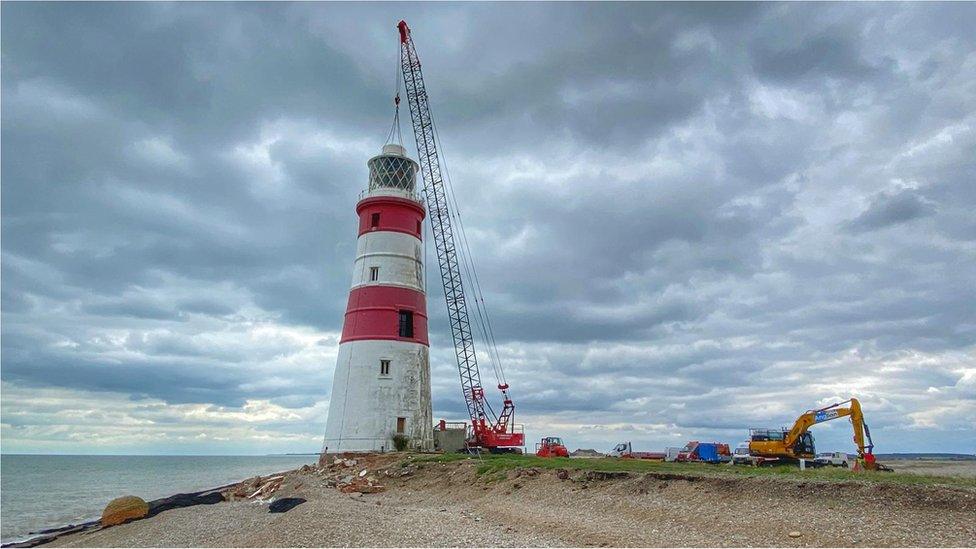
After days of preparation, deconstruction work at the historic Orfordness Lighthouse got under way
For more than 200 years, the lighthouse at Orford Ness has warned mariners they are nearing Europe's longest shingle spit. But as the sea steadily reclaims the land on which it is built, its owner has decided the time is right for the lighthouse to come down, changing forever the skyline of the Suffolk coast.
"I feel highly emotional," says Nicholas Gold, owner of Orfordness Lighthouse. "It's taken a big chunk of my life."
The Grade II-listed building is the 11th - and final - Orfordness Lighthouse.
It was established 228 years ago on a particularly perilous stretch of England's coast. Although it is impossible to say how many souls it has helped save during that time, a single storm off Orford Ness, for example, wrecked 32 ships during a single day in 1627.
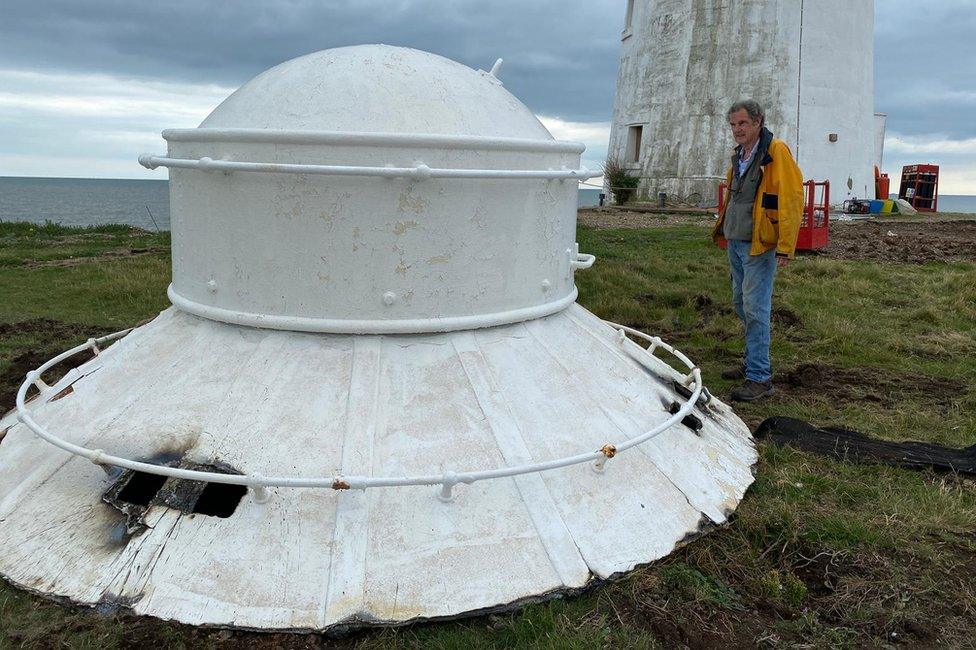
On Thursday, the dismantling operation began and the roof was cut away
Earlier in the week, a giant crane made its slow way along the spit towards the lighthouse. On Thursday, the dismantling operation began and the roof was cut away. Dismantling the lighthouse is expected to take about four weeks.
It is hoped parts of the lighthouse can be used in a permanent memorial nearby.
Drone footage captured the start of deconstruction work
In the early 1980s, its base was 90m (295ft) from the sea. In the winter of 2013-14, four metres (13ft) of beach was lost in a single storm.
It took a pounding in 2018's "Beast from the East" storms, and the sea is now just a few metres from the imposing red and white structure.

Tides have slowly eroded the shingle beach on the Ness bringing the lighthouse perilously close to the sea
Orfordness Lighthouse Trust plans to remove the lantern room and other artefacts that will one day form the basis of a lighthouse memorial on the other side of the Ness, facing Orford town's quay.
Adrian Underwood's father Charlie was the last lighthouse keeper at Orford Ness, working there from 1965 until his retirement in 1994 and recognised with an MBE for his service.
Mr Underwood, who published his father's second book on Orford in tribute to him after his death in 1997, external, has a small model of the lighthouse in his home in Ireland.
"I spent most of my Sundays on Orford Ness with him," said Mr Underwood, who, with no other vehicles on the shingle spit, taught himself to drive while his father worked.
"It was just part of life. When I look back on it, I was blessed.
"I have not been back to Orford since 2007 but in my mind the lighthouse will always be as it was. I'm almost glad that I've not seen it since so that for me it will always be as I remember it."

Adrian Underwood spent most Sundays as a teenager with his lighthouse man father Charlie on Orford Ness

Holding back the sea
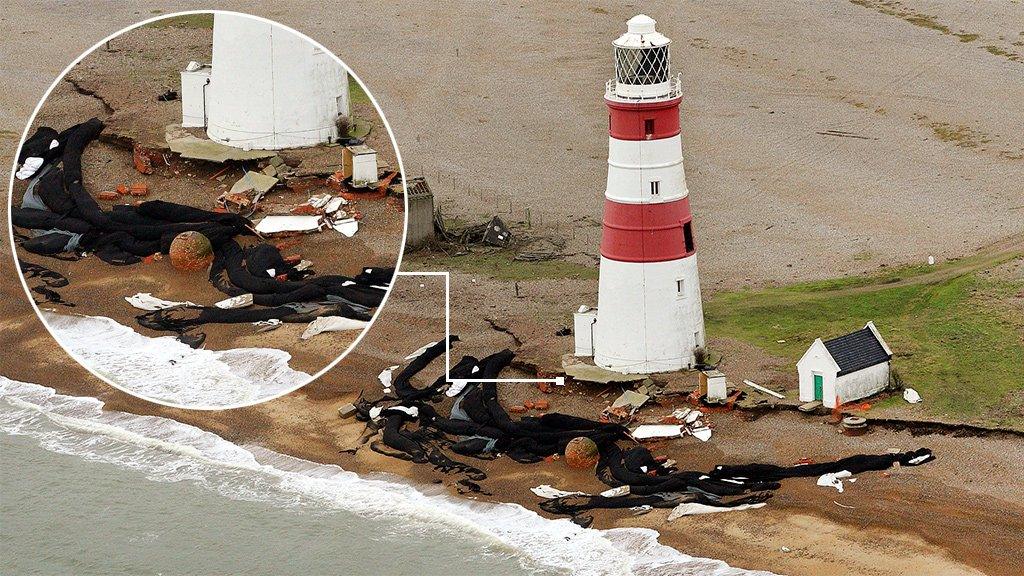
Relentless tides have started to take away the shingle from underneath the lighthouse's concrete footing
To protect the lighthouse from erosion, the Orfordness Lighthouse Trust filled rubble sacks with shingle, bound them together with felt and laid them out in "large sausages" each weighing about 50 tonnes.
This flexible wall has kept the building standing for longer than most expected.
Longer-term defences, such as steel piling or rock armour, would not be allowed due to the Site of Special Scientific Interest (SSSI) status of Orford Ness.
This status has also prevented the cutting-off of the lighthouse at the base and moving it back, as has been done with some others.
Equally, as the sea can continue to cut around the sides, the trust would have had to keep adding to the defences to prevent this happening or the lighthouse could end up on its own small island.
The lighthouse was never designed to be in the sea because the salt water would have made short work of its lime mortar.

The lighthouse was decommissioned in 2013, after which Mr Gold bought it. He describes that decision as one made by a "silly idiot" since it was "always doomed".
Since then, a small team of volunteers have sought to prolong the life of the building.

Nicholas Gold bought the lighthouse in mid-2013
"The whole point was the lighthouse had been such a celebrated landmark over so many years since the 18th Century," he said. "It would be a wasted opportunity to leave it unkempt and sad in its final years.
"We did a deal. The headline price was £2,000 but I had a capital commitment to sort out the taking down and removal of it. I won't get any change from a six-figure sum."
You might also like:
Mr Gold previously worked as a financial adviser in London and has always had a passion for buying "one-off buildings". They include a redundant church and a former US spy station.
The lighthouse "seemed to fold naturally into the family," he said.

England's lighthouses
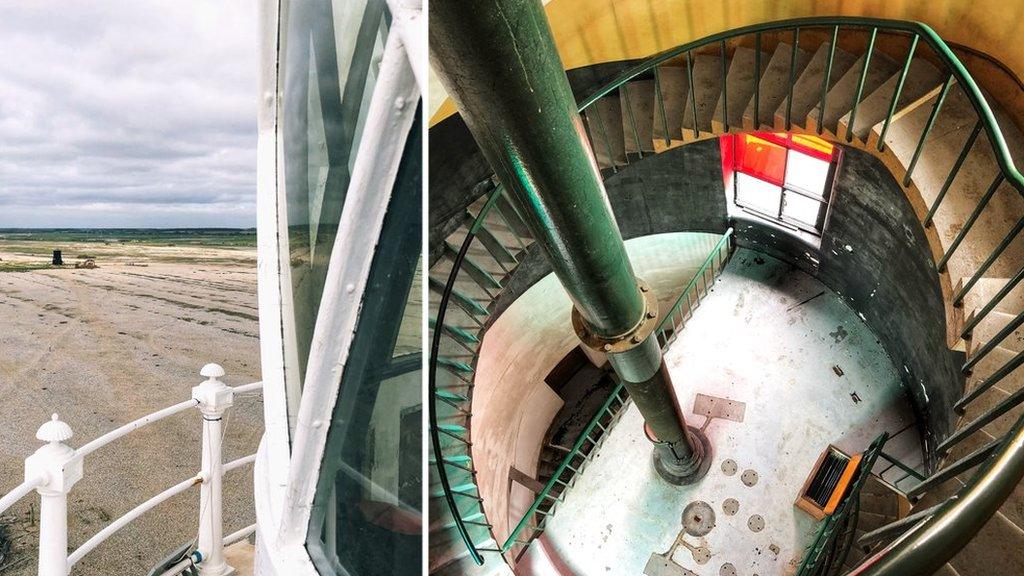
The view from the top of Orfordness Lighthouse in 2018 towards Aldeburgh and looking down from the spiral staircase towards the "sectored light" landing. Charts would show mariners the sea marked into coloured sectors. Green was safe, white "heading into danger" and red meant you were about to run aground
England is home to more than 130 lighthouses
The first to be built on rock in the open sea was Winstanley's Tower in 1698, off Plymouth
The 19m (62ft) Dover Pharos was built by the Romans in about 50AD and was still in use when William the Conqueror arrived in 1066
The last manned lighthouse closed in 1998 at North Foreland in Kent, external


The site is closed to visitors and members of the public have been told to stay away while the deconstruction work takes place
Volunteers from the lighthouse trust must now "deconstruct" the building while there is enough shingle beach left for a crane to come and lift its 14-tonne cap and lantern room - or they will be lost forever.
The team will then collapse the walls inside the lighthouse so that the brickwork does not spill across the shingle beach.
Work is also under way to save as many of the building's original features as possible, along with its bespoke curved furniture.

The lighthouse in 1951, just over a decade before it became one of the first remote-controlled lighthouses in the British Isles
While the lighthouse is owned by Mr Gold, the National Trust owns the surrounding Ness, an area with its own place in history as a site for ballistic weapons, radar and atomic research.
But from its point of view, taking on the preservation of the lighthouse would have been too costly.

Orfordness lighthouse has attracted artists for more than two centuries. Landscape and marine painter William Daniell featured it in his 1820s series A Voyage Round Great Britain
Nick Collinson, its general manager for the Suffolk and Essex Coast, said the disappearance of the lighthouse was in keeping with the longer life and history of the Ness.
"Orfordness Lighthouse has been an iconic landmark on this stretch of Suffolk's coastline for centuries, and we are saddened to see it lost," he said.
"Sitting on such a dynamic shingle spit, constantly changed by the sea, man's presence here can often feel ephemeral."

"I find Orford Ness hauntingly beautiful," said Norfolk-based illustrator Rebecca Pymar. "The Ness is home to fragile and endangered habitats and species which is mirrored by the lighthouses' own fragility as it makes its sad decline into the sea. It will be missed."
The lighthouse trust hopes to sell off its "local bricks in wonderful condition" to help raise funds to recreate a likeness of its top third more than a mile inland, featuring as many of the original elements as possible.
The nature reserve on which the lighthouse stands is currently closed to the public.
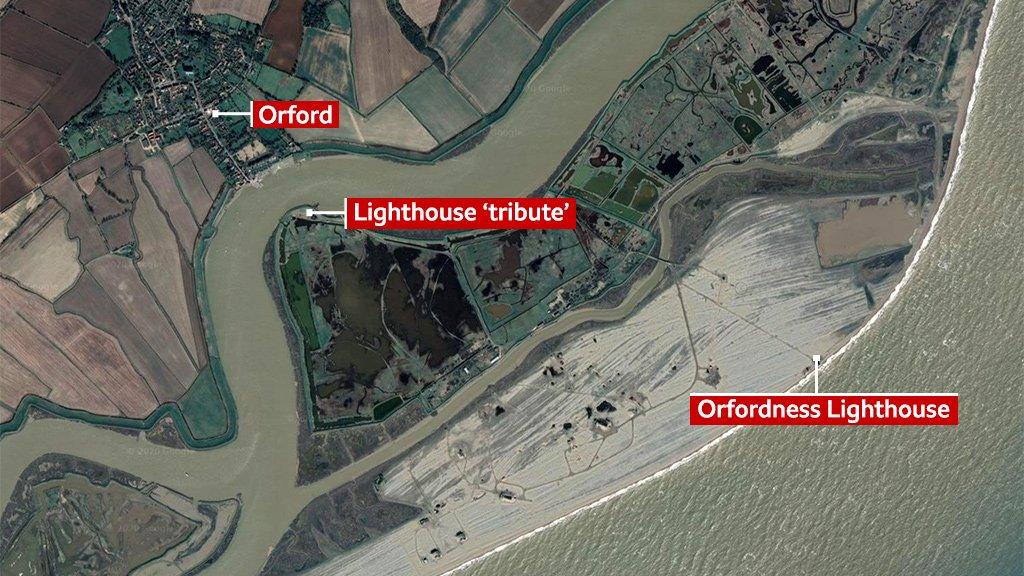
The Orfordness Lighthouse Trust hopes it will be possible to construct a tribute to the lighthouse, featuring a number of original features, at a new location nearly 1.5 miles (2.4km) from the sea
"The lighthouse itself is an emotional thing, certainly for the people of Orford who've lived with it on their horizon for generations," said Mr Gold.
"It's Orford's equivalent of the Taj Mahal."

Find BBC News: East of England on Facebook, external, Instagram, external and Twitter, external. If you have a story idea email eastofenglandnews@bbc.co.uk, external
- Published25 February 2020

- Published1 October 2019
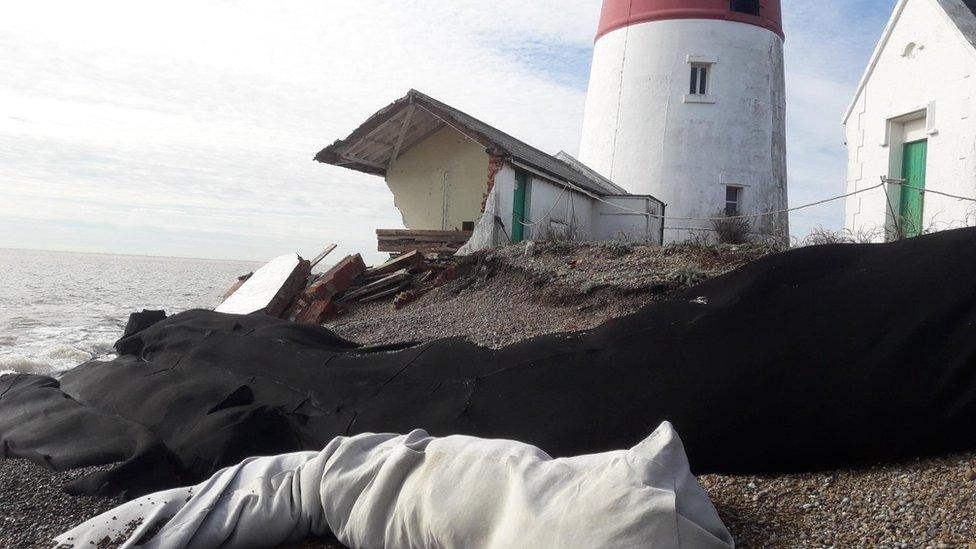
- Published7 June 2019
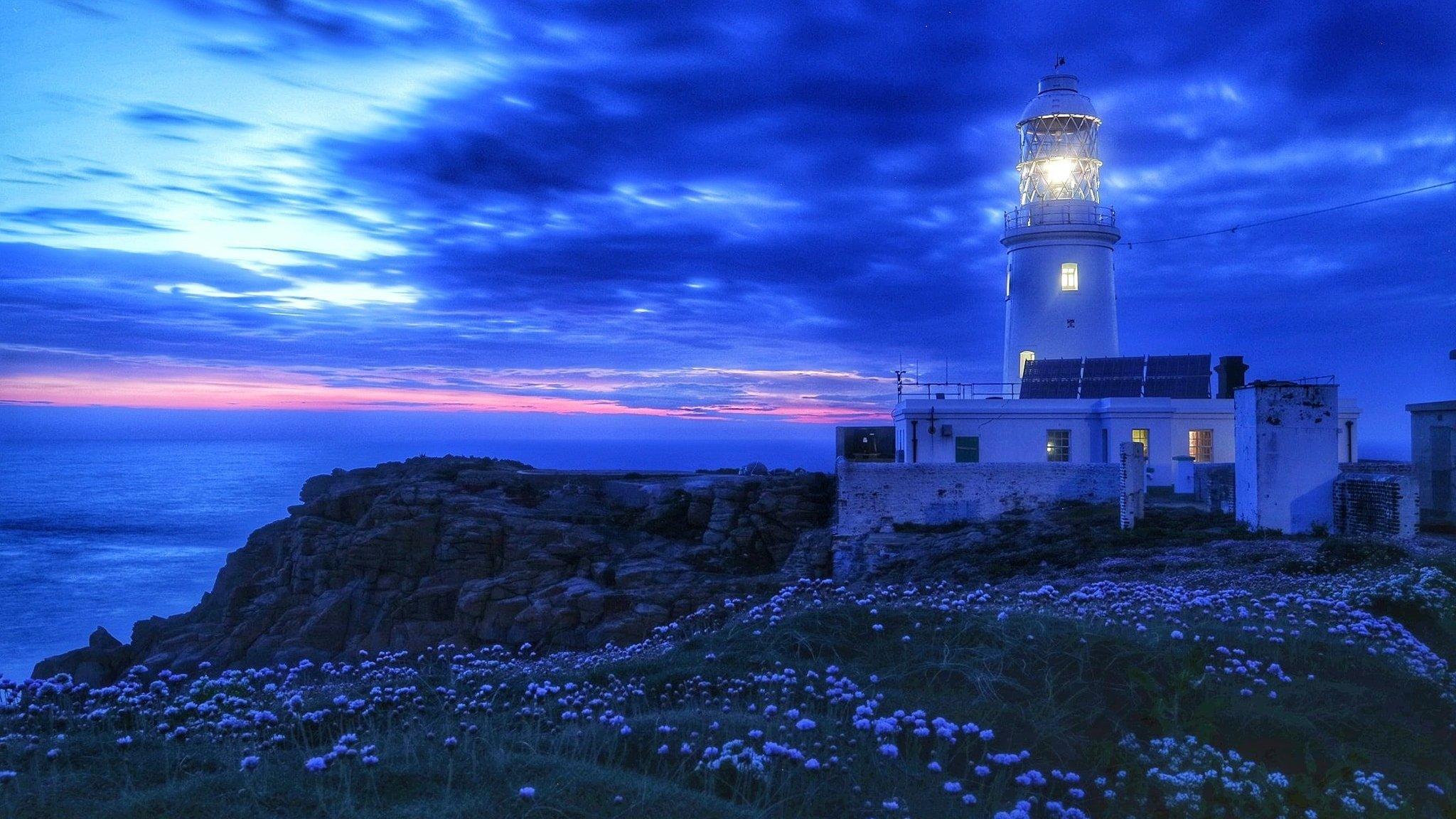
- Published11 July 2019
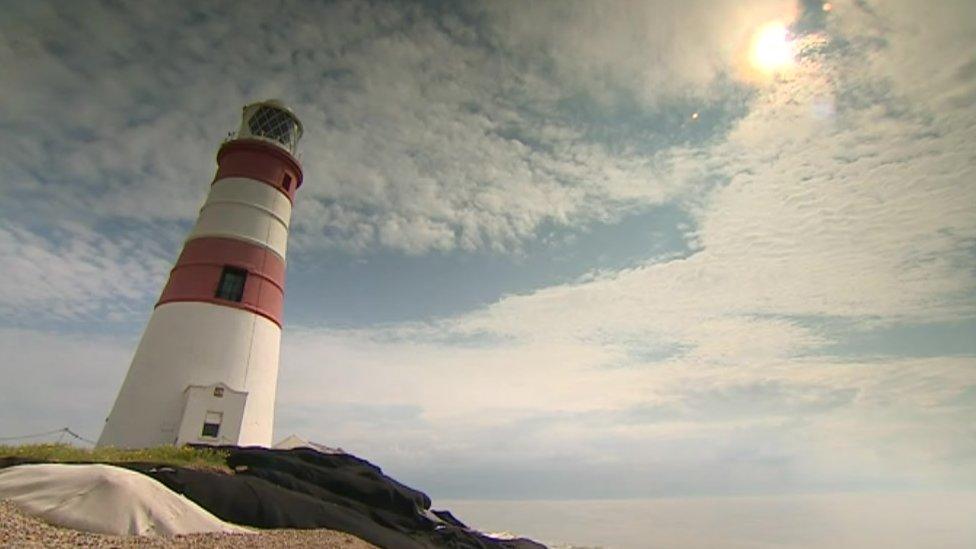
- Published12 August 2018
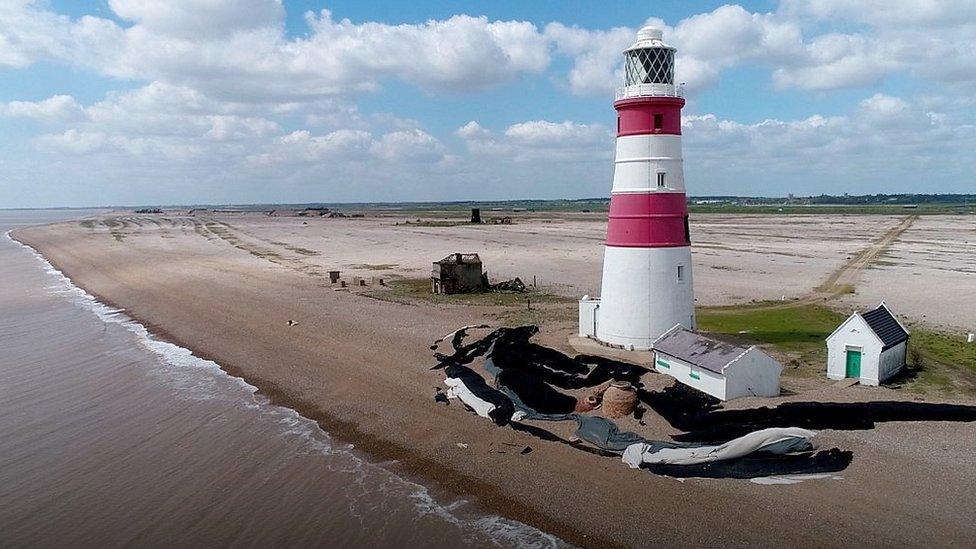
- Published26 January 2017
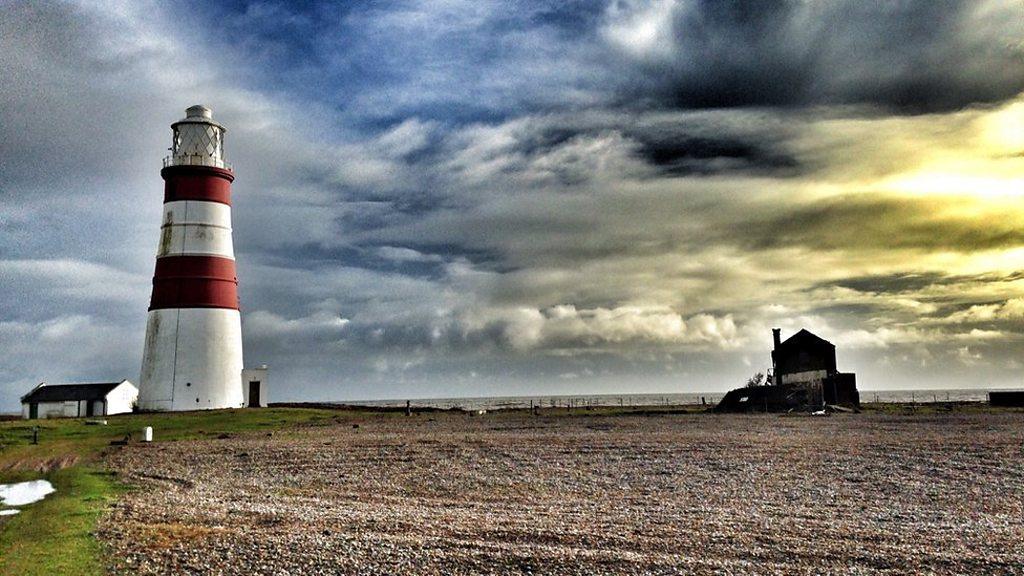
- Published28 June 2013

- Published27 April 2013
